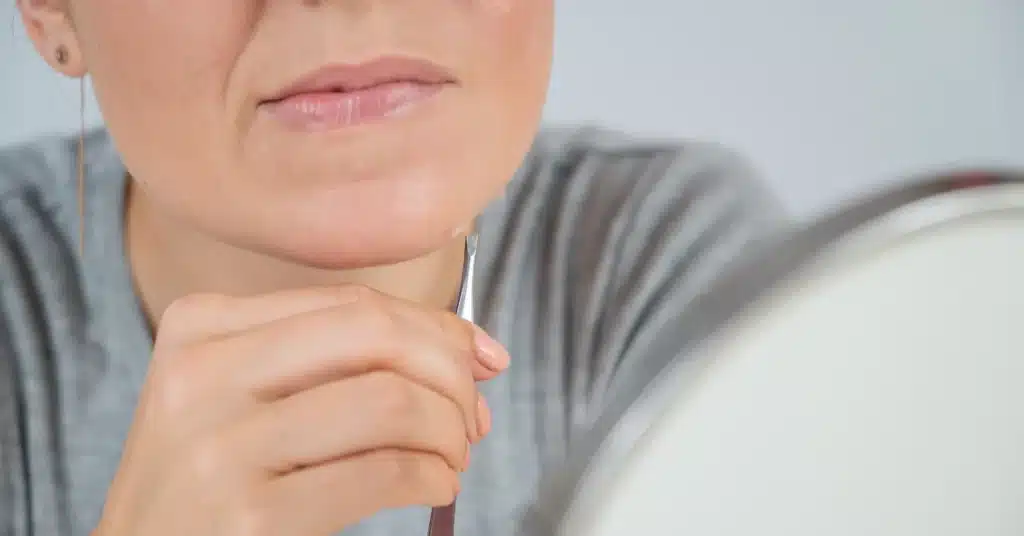Understanding High Testosterone In Women: Symptoms, Causes, Diagnosis and Treatment
While Testosterone is commonly associated with male physiology, it’s worth noting that females also produce small quantities of this hormone within their ovaries and adrenal glands.
An increase in Testosterone levels in women can result in increased acne and excessive body hair and may signify the presence of an underlying medical condition.
Working in conjunction with the female sex hormone Estrogen, Testosterone assumes a critical role in the development and preservation of female reproductive tissues and bone density.
Additionally, these hormones exert influence over behavioral patterns.
This article delves into the various factors that can lead to high Testosterone levels in women, outlines the associated symptoms, and discusses available treatment options.
Symptoms of high Testosterone in women
When Testosterone levels are out of balance in women, it can impact their physical appearance and overall well-being.
Signs of increased Testosterone in females may include:
- Breakouts of acne
- A deepened voice
- Excessive facial and body hair
- Irregular menstrual cycles
- An enlarged clitoris
- Reduced breast size
- Thinning hair
- Increased muscle mass
In cases of extremely high Testosterone levels, it can even lead to infertility.
Understanding the causes of high Testosterone in women
When it comes to high Testosterone levels in women, it’s often linked to an underlying medical condition, such as:
Congenital adrenal hyperplasia (CAH)
CAH is an umbrella term for inherited disorders affecting the adrenal glands.
These glands release hormones like Cortisol and Aldosterone, which regulate metabolism and blood pressure.
They also produce male sex hormones, Dehydroepiandrosterone and Testosterone.
In CAH, a deficiency in certain enzymes reduces Cortisol and increases Testosterone production.
CAH can be either nonclassic (mild) or classic (severe).
While CAH cannot be cured, most individuals with this condition can receive treatment to manage symptoms and enhance their quality of life.
Hirsutism

Hirsutism is a condition involving the undesired growth of hair in women.
Healthcare experts believe it’s linked to genetics and hormones.
Common symptoms include the development of dark and coarse hair in a male-like pattern, often affecting areas like the lower back, chest, and face.
In cases where Testosterone levels are exceedingly high, additional symptoms can arise, such as acne, hair loss, a deepened voice, an enlarged clitoris, increased muscle mass, and reduced breast size.
Many individuals find relief through a combination of home remedies and medical treatments, which can help manage the symptoms of Hirsutism.
Polycystic Ovary Syndrome (PCOS)
PCOS is a hormonal disorder affecting women of reproductive age.
It’s estimated to impact around 6-12% of females in the United States.
While PCOS is often diagnosed in a person’s 20s or 30s, it can also affect young individuals as early as 11 years old.
Common symptoms of PCOS include:
- Weight gain
- Challenges with fertility
- Acne or oily skin
PCOS can lead to various health issues, including Depression, heart disease, infertility, miscarriages, obesity, sleep apnea, and Type 2 Diabetes.
Although the exact causes of PCOS are not fully understood, excess insulin and genetics are believed to play a role.
Read: Hormonal Reset: How to Lower Testosterone in PCOS?
Learn insights into the factors affecting hormonal balance and women’s health, providing a profound understanding of this critical connection.
Diagnosing high Testosterone in women
Diagnosing elevated Testosterone levels in women involves the following steps:
Physical examination

During a physical check-up, the doctor will search for signs like acne, excess body hair, and facial hair growth.
They will also inquire about any irregularities in the menstrual cycle and attempts at pregnancy.
If they suspect PCOS, they may examine the pelvic region for any irregularities.
Blood test
If the symptoms point to high Testosterone levels, the doctor will collect a blood sample to test hormone levels.
Typically, the blood sample is taken in the morning when Testosterone levels are at their highest.
Ultrasound
For a potential diagnosis of PCOS, the doctor may perform an ultrasound to examine the ovaries and uterus.
Treatment options for managing high Testosterone in women
The treatment for high Testosterone in women varies depending on the underlying cause.
Typically, doctors recommend a combination of lifestyle adjustments and medications,
Letâs understand in detail:
Medication
High Testosterone and related conditions can be addressed with the following medications:
- Eflornithine: When applied to the skin, this cream inhibits the growth of unwanted facial hair
- Glucocorticosteroids: These steroid hormones are used when there’s evidence of insufficient steroid production by the adrenal glands. They play a role in regulating metabolism and the immune system
- Metformin: Originally designed for Type 2 Diabetes, it’s also used to reduce insulin resistance and address metabolic issues in individuals with PCOS
- Progestin: A hormone that can regulate menstrual cycles and improve fertility
- Spironolactone: This Diuretic helps balance water and salt levels and reduces excessive female hair growth
However, it’s important to note that oral contraceptives may not be suitable for those trying to conceive and may have potential side effects.
Hair removal treatments
Unwanted hair can be managed with treatments like Electrolysis and laser therapy, although it’s important to note that these options don’t address underlying hormonal imbalances.
- Electrolysis: This technique involves inserting a tiny needle into each hair follicle. An electric pulse passes through the needle, damaging the follicle to prevent new hair growth
- Laser therapy: In this procedure, a healthcare professional uses a laser to target and damage hair follicles. It often requires several sessions
Both of these hair removal methods come with potential side effects and risks.
Anyone dealing with a hormonal imbalance must consult a doctor before pursuing these treatments.
Lifestyle changes

Certain lifestyle adjustments can help reduce high Testosterone in women and manage related symptoms:
- Maintaining a healthy weight: Some studies suggest that even a modest 5-10% body weight loss can enhance fertility, regulate menstrual cycles, and alleviate PCOS symptoms
- Balanced diet: Following a well-rounded diet while limiting foods high in sugar, refined carbs, saturated fat, and trans fat can improve PCOS symptoms
- Hair management:Managing facial and body hair can be done by plucking, shaving or waxing. Some individuals choose to lighten their hair to make it less noticeable
Conclusion
High Testosterone in women, though often associated with males, can impact their health and appearance.
Symptoms like acne, excess hair, and irregular periods may signify underlying conditions.
Treatment options include medications, lifestyle changes, and hair removal treatments.
Notably, a combination of oral contraceptives, antiandrogens, and Metformin has shown effectiveness in managing Hirsutism.
It’s important to seek a doctor’s help for a tailored approach.
Understanding and addressing high Testosterone in women is key to better health and well-being.
Frequently Asked Questions
What happens if Testosterone is high in females?
When Testosterone is high in females, it can lead to physical changes like acne, excess body hair, deepening of the voice, and irregular menstrual periods. In rare cases, it may even cause infertility. These symptoms often signal an underlying medical condition that needs attention.
What causes high Testosterone in females?
Underlying medical conditions typically cause high Testosterone in females. One common cause is Congenital Adrenal Hyperplasia (CAH), a group of inherited disorders affecting the adrenal glands. PCOS (Polycystic Ovary Syndrome) is another contributor. Genetics and hormonal imbalances play key roles in these conditions, leading to elevated Testosterone levels.
Does high Testosterone mean PCOS?
High Testosterone levels do not automatically mean a diagnosis of PCOS. While PCOS can lead to elevated Testosterone, other medical conditions like Congenital Adrenal Hyperplasia can also cause high Testosterone in females. A doctor’s evaluation is essential for a proper diagnosis.
What are the signs of high Testosterone?
Signs of high Testosterone in females include acne, excessive body and facial hair, irregular menstrual cycles, deepening of the voice, an enlarged clitoris, reduced breast size, thinning hair, and increased muscle mass. Extremely high levels may even lead to infertility. These symptoms often indicate an underlying medical issue.
WowRx uses only high-quality sources while writing our articles. Please read our content information policy to know more about how we keep our content reliable and trustworthy.






